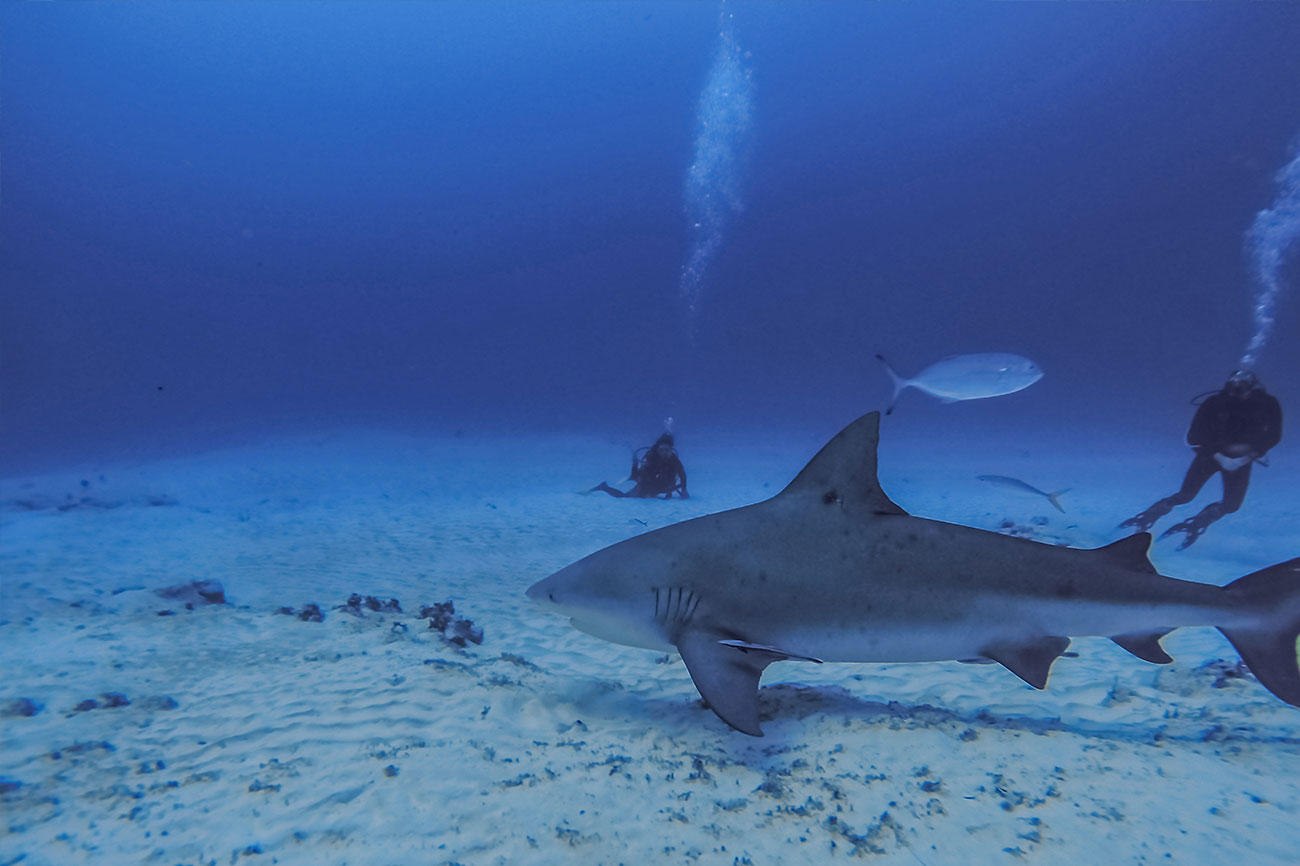
Each year these important marine animals come to the coastal waters of the Mexican Caribbean where scientists and conservationist are able to study the amazing phenomenon of bull sharks’ aggregations and migrations in the Caribbean Sea
The Mexican Caribbean has marine life that changes with each season and provides an important attraction for wildlife tourism activities. For example, we can see nesting sea turtles, mantas, and whale sharks during summer; and we get to dive with spotted eagle rays and bull sharks during winter!
Bull sharks are named due to their stout appearance: a robust body and a rounded snout. This shark can reach up to 3.5 m long and takes 14-25 years to be able to have only a few pups which take almost a year to develop before birth! It is quite important we understand that these characteristics make this shark (like all sharks and rays) very vulnerable to fishing because it is not capable at all to keep up any sort of extraction. Importantly, sharks (and rays) have a vital role in the marine ecosystem because they are predators, so they control the populations of many fish within a food network. The presence of sharks is a sign of a healthy reef, and when removed, we create an unbalance in our precious reefs.
Some areas of the world such as South Africa, Palau, Indonesia, and Playa del Carmen have wisely realized that sharks and rays are far worthier alive than dead. Although care should be given to these practices too, diving with these magnificent animals provides an opportunity for us to admire sharks and realize that they are not human killers, despite what Jaws made you think. In PDC, scientists and conservationist take this opportunity to study the amazing phenomenon of bull sharks’ aggregations and migrations in the Caribbean Sea. Interested in what they do? Visit www.pelagioskakunja.org and www.savingoursharks.org.